Long-Lasting, Organic DIY Bed Bug Treatment
Bed Bug Killer Powder is vital to our effective extermination solution. The powder is a powerful, 100% natural weapon lethal to bed bugs but non-toxic for humans and animals. When used as recommended with Bed Bug Proof Mattress Covers, Bed Bug Barriers and the Bed Bug Steamer (an essential for slat beds), you’ll sleep soundly knowing that you’ve single-handedly deployed a strategic attack to wreak permanent destruction of these blood-sucking parasites.
Non-Toxic Bed Bug Remedy for Humans and Animals
Deadly to Bed Bugs
Our Bedbug Powder is as simple as it is effective. The mined powder is a crumbly sediment formed from the skeletal fossil remains of tiny aquatic organisms. To humans, the powder has a slightly abrasive feel but to bed bugs, the texture is razor-like and inflicts terminal injury as the bugs crawl through it.
It is a scientifically tested, registered organic product approved by the Australian Pesticides and Veterinary Medicines Authority (APVMA). This APVMA registration verifies the powder’s effectiveness and safety.
How Does Bed Bug Killer Powder Kill Bed Bugs?
To survive and breed, bed bugs must crawl to their next blood host because they can’t jump or fly.
By restricting the their movements using our bedbug products, they are left with no option but to crawl through the Bed Bug Powder in their search for nourishment. As they do this, their protective waxy exteriors are destroyed by the highly abrasive powder, causing death by dehydration.
The complete system is 100% effective in stopping and preventing an infestation of your property while your guests and pets sleep comfortably.
If you follow the complete system (see the video below) we guarantee you’ll never need to share your bed with these nasty pests again, or we’ll refund your money in full.
Watch Our Videos To See How The Complete Bed Bug System will Work For You
DIY Video for Ensemble Bed
DIY Video for Bed Frame with Slats
Bed Bugs Cannot Resist Our Bed Bug Powder
If you’ve ever faced a bed bug infestation, you’ll know chemical pest control methods mostly keep them quiet for a few days or weeks. Once the nymphs hatch, a follow-up dose of toxic insecticides is required. And, if just a couple of them have crawled into the safety of a crevice during treatment, you’ll be calling the pest control company back again. Professional pest control methods can end up costing thousands of dollars with no guarantee of killing the bed bugs permanently.
Meanwhile, they have also evolved and built resistance to chemical insecticides. Bed Bug Killer Powder is a physical method of terminating them ( think… the equivalent of crawling through razor-sharp grains of sand ), so building resistance is not an option for them when it comes to facing our Bedbug Powder!
Australia’s leading Entomologist Stephen L. Doggett tested traditional professional pest controller chemical treatments, and this is what he concluded:
“Bed bug populations have developed resistance to multiple insecticide groups and that they have become highly resistant to pyrethroid insecticides [used by most pest control companies]. Despite this, and due to a general scarcity of alternative control options, when faced with a bed bug infestation both pest management professionals (PMPs) and residents of infested properties continue to apply insecticides in attempts to achieve control.”
In the same study, Bed Bug Killer Powder was found to inflict a 100% mortality rate on all strains of bed bugs tested.
Take charge by investing in a flexible, do-it-yourself bed bug remedy to get rid of them.
Do You Have a Bed Frame with Slats?
Steam the Bed Slats For Instant Results
The Bed Bug Killer Powder can take up to 10 days to kill adults, while first stage nymphs die in about 24 hours. When it comes to beds with slats, there are literally thousands of places for them to hide, so the bed slats need to be steamed for instant protection.
Use the Bedbug Steamer to steam any cracks and crevices on the bed frame and slats. Then dust the same areas with Bed Bug Killer Powder to deal with nymphs that may hatch later, giving you instant and long-term protection.
Kill Every Bed Bug Trying to Access or Leave Your Bed with our Bed Bug Killer Powder
Our Bedbug Barriers are designed to stop them in their tracks using our Bug powder. This powder effectively kills every bedbug that tries to climb up or down the bed legs. We’re proud to say that we’re the only company in the world that can deliver these amazing results. Check out this video to see how we eliminate 100% of them, unlike our competitors who fall short.
Guaranteed Instant and Long-Term Protection from Bed Bugs
Used as recommended we guarantee instant and long-term protection from a bed bug infestation, or we’ll refund your money in full.
Here is what your full bed bug artillery kit comprises of:
Bed Bug Killer Powder: One bottle will treat a 3 bedroom home or 3 hotel rooms.
Bedbug Duster: Applies the Killer Powder accurately and finely, reaching cracks and crevices with ease.
Bed Bug Barriers: Includes Floor Bed Bug Barrier, Screw In Bed Bug Barrier and Bed Bug Barrier Tape offer all the protection you need to trap bed bugs while treating your property with Bed Bug Killer Powder and for long-term protection. The primary goal of these barriers is to stop and kill them walking up bed legs.
Bed Bug Mattress and Base Covers: Trap them and their nymphs during treatment so they simply cannot reach their blood hosts, giving you instant protection. Don’t use Bed Bug Killer powder directly on your mattress, use a mattress cover instead to control them.
Bed Bug Steamer: Get instant results with the steamer and boost your treatment efforts. The steamer is a critical component for success if you have slat bed bases.
Pillow Covers: To protect your pillows. Don’t use Bed Bug Killer powder directly on your pillows, use a pillow cover instead to control bed bugs.
Or Read Our Instructions Here.
If you’re not sure of exactly what you need to eradicate bed bugs for your unique situation, call one of our experts on 1300 760 646.
Take Charge of Blood Feeding Bed Bugs Today
Don’t wait for a blood thirsty infestation of bed bugs to have you and your housemates cursing. Protect your property and red-blooded residents from bed bugs today.
APVMA Certification
Frequently Asked Questions
- Does bed bug killer powder work?
Yes, bed bug killer powder made from Diatomaceous Earth (DE) is very effective. It dehydrates and kills bed bugs by damaging their exoskeletons. It’s safe for humans and pets and provides long-term protection when left undisturbed. - Can I put bed bug powder on my mattress?
No, because you might inhale it while sleeping. Instead, apply the powder to the bed frame and in crevices. Use mattress encasements to prevent them from getting in or out. - What kills bed bugs permanently?
Diatomaceous Earth is the only product that kills them permanently. It remains active indefinitely, providing years of protection unless it is removed. Its the perfect bed bug remedy.
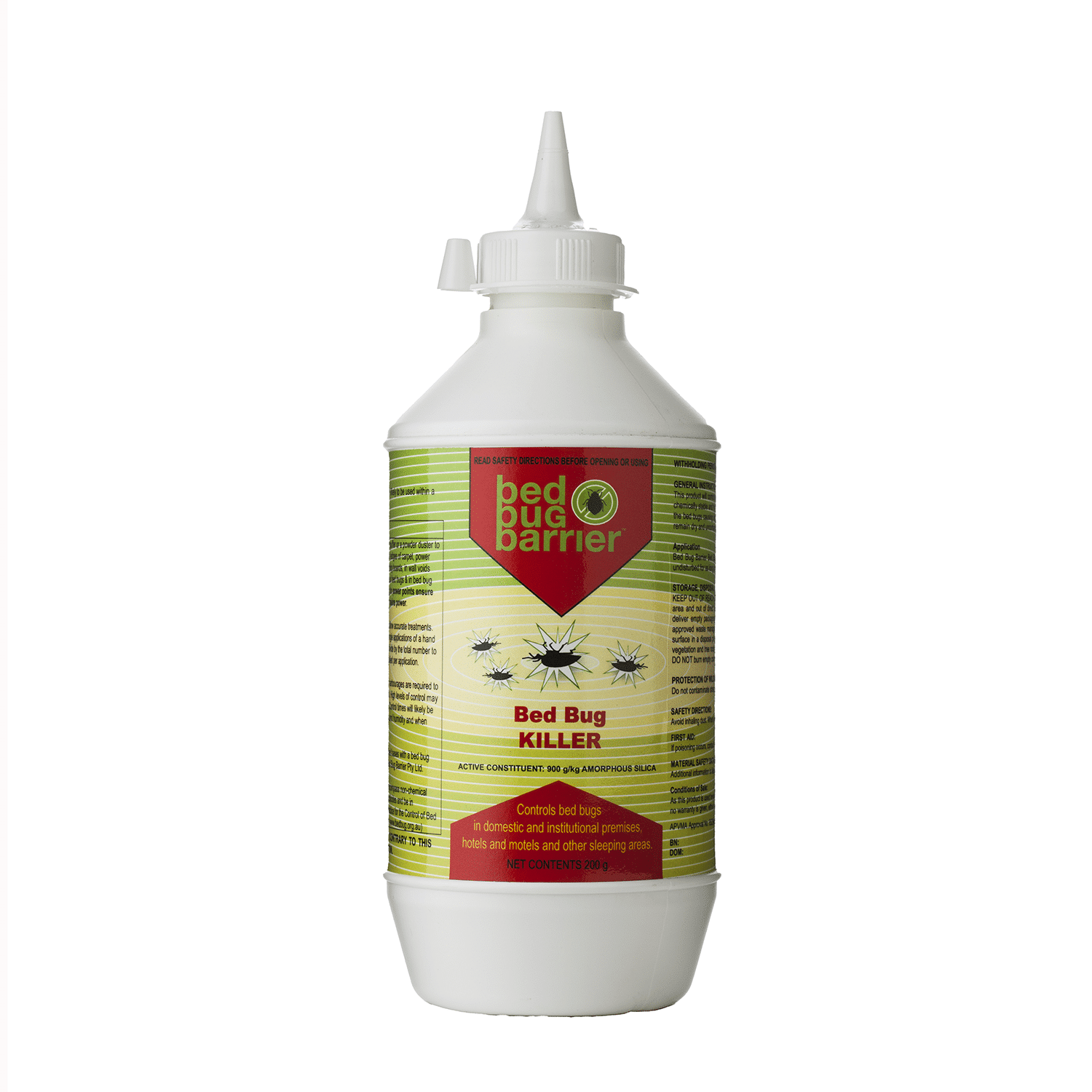







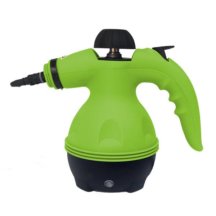
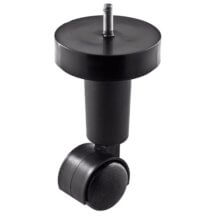
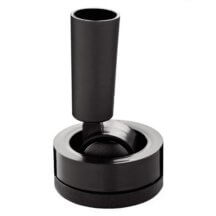
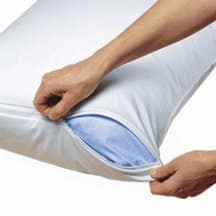


Pavan K –
I used their treatment and it works great! The powder is safe for me and my pets. Highly recommend it!
Jack Anderson –
I recently bought the Bed Bug Killer Powder 200g, and it has been a lifesaver. I used it with Mattress Coverss, Barriers and the Steamer. This combination restricted bed bugs’ movement and forced them into the powder, leading to their demise. Since using it, my bed bug problem has vanished. Highly recommended for anyone dealing with bed bugs!
Brendan B –
Fantastic long lasting product worked perfectly with the system and non toxic Thank you!
SWeston –
I’m a weekly business traveller and unfortunately at some stage bed bugs stowed a ride in my luggage and set up home in out bed Like others we tried chemical insecticides and steam cleaning from a professional pest control company, but after spending more than $1k we still had the bedbugs biting us. One week after applying bedbug barrier powder the bugs and annoying bites were gone. With a child and a baby on the way we invested in the mattress protectors for all the cots and beds so we know our mattresses are safe should they return.
Tracey –
I can’t thank you enough for helping us. Have never had issue with bedbugs and then suddenly we had them in our home that we’d lived for 7 years. We tried everything, we tried all the natural remedies to get rid of them. Eucalyptus oil, steaming etc, etc, etc nothing worked. I google this product and thought we had nothing to loose.
Used the product and next day no more bites and none since.
I’m so grateful. Thank you
Deb –
Hi there, everything is good. We seem to be bed bug-free now. It was incredibly stressful when I discovered we had a problem before Christmas. My daughter had a bed full of bed bugs but wasn’t getting bitten herself. Every now and then she would break out in hives but we didn’t know why. I spent one night in her bed and woke up covered in hideous bites. I took the bed apart and there were bugs and eggs everywhere. We ditched the bed and had one visit from a pest guy. He didn’t speak English very well and Googling the problem for information only added to the stress. It was a great relief to find your website. Very clear information and exactly the products needed all in one place. Videos are great as well. It gave me the confidence to address the problem and believe that we could be bed bug-free again. So far so good! It’s a great website. Thank you. Deborah
Donna –
I was suffering desperately from what I thought was hives for about 6 months. I actually had a dreadful allergy to bedbug bites but didn’t know it until I found one walking around on my mattress!! UGH! I called a few pest exterminators and even booked one until I discovered that we would have to leave our house OVERNIGHT and move all the furniture etc, etc. As a last resort I skeptically tried calling Tony and Sean at Bed Bug Barrier thinking, ‘well at least it is not expensive and if it doesn’t work we haven’t lost as much money as the chemical option’. I used the powder, bought the mattress protector and taped up all round the bed. Three weeks later though we still had some bites. I called and spoke to Tony himself. He told me that because my slatted bed might still have some hiding places I should wet down the slats and then redust. We did and it’s been about a month since then and NO BED BUGS!!! So happy and can actually sleep again. I am still a little stressed they might come back so I am going to keep dusting periodically but imagine if I had wasted all that money on chemicals and that didn’t work – there were no guarantees there, unlike with Bed Bug Barrier. I also love the after sales attention that Tony and his team gave me, emails and even a call to see if it was working. Thanks so much for helping us through this awful time
Sue –
To Tony,
I don’t normally reply to products I’ve used, but I just want to say thank you for yours. I went up north to Broken Hill for work and was getting bitten by something up there.
I brought them home with me. I did the wrong thing first and tried to blow them up with insecticide which made them scatter. I am so grateful your website is full of useful information. I washed everything, steamed, put the mattress cover on and used the powder. I have not seen any sign of them since. Thank you for giving me back my sleep 😊
A very happy customer
Sue
Simon –
I was stunned when I found the little bastards while changing my sheets. I have no idea where they came from and they were causing all sorts of ruckus – compromised relationships with housemates and waking up itchy in the middle of the night and then not being able to go back to sleep. The thought of bugs feeding on me overnight was disgusting and stressing me out greatly.
I had been using surface sprays, the nasty stuff that kills cockroaches on my bedding and this can’t have been at all healthy, they are really resilient and the eggs hatch after surface sprays wear out.
This product is basically a dust, and not a sticky or staining one either. I have used barely a third of the bottle it came in (I have tile floors, no carpet for them to hide in) and I haven’t been bitten in weeks. I had been fighting a constant, stressful battle for about 4 months until I tried this product, now they are gone and I am resting much, much better.
10/10 can and will recommend to anyone with Bed Bug issues – and the result of my research is that this may be needed as Bed Bugs are making a big comeback in the Developed world.
Don’t be embarrassed, get proactive – I was stunned how easy it proved with the right product.
Veronica –
We recently had a HUGE problem with bed bugs in the house. They are disgusting, and extremely difficult to get rid of. We stripped the carpets and threw out the bed/furniture in the room, but they were still there. Tried EVERY option we could find, nothing was working. We were about to bite the bullet and call an exterminator, but I came across this product and decided to give it one last shot.
Wow, can’t believe the results! This actually got rid of the bed bugs, and they haven’t come back, either. I wish we would of found this product sooner; it would of saved us a lot of time and hassle. Definitely worth the price, highly recommend.
Kenny –
I bought Bed Bug Killer powder. I had got 1 treatment with a pest control company but the bed bugs come back. After 2nd treatment, they still had come back, so I applied this Bed Bug killer powder in my house. I used 2 bottles for a 5 bedroom hotel unit ( I still have some powder left for 1 room ). After that, all bugs are dead. I actually have one more treatment as a last one of pest control company’s service but I think I don’t need their treatment anymore. No bite anymore, this is really amazing. Someone said that I would finally move out, but bed bug killer saved my peaceful life. I strongly recommend you to use this powder. I really appreciate your amazing product and peoples who invented this one. thank you soooooo much.
David C. –
I have young children and pets and when I found out we had brought bed bugs home with us at some point I was horrified….we looked for a non toxic product that would suit my infestation and family situation and a friend told me all about bed bug killer! It was quite seriously 100s of dollars cheaper than having chemical sprays and it was a little scary with little ones having chemicals sprayed throughout the house. The killer powder has now lasted 13 months and we are so happy with the results in conjunction with other products…thanks Bed Bug Barrier for a peaceful nights sleep and 100% non toxic solution, David
Tracy Briggs –
I’m giving the bed bug killer powder as the only long term eco-friendly and family friendly solution to bed bug infestations. I was never going to let anyone spray chemicals in my bedrooms & expose my family & pets to anything non organically based. Bed bug killer powder is basically a type of sand that kills insects! The friendly staff member explained the company’s success rate & I guarantee this to everyone i know. You can eat this stuff! Which is peace of mind with pets & toddler’s in the picture. Great to use with any insect.
Sarah Perman –
I have been shopping around for bed bug solutions with my elderly mother who is very old school when it comes to pest control. After discovering pest controllers charge a fortune for bed bug detection & then spray chemicals everywhere with no guarantee for results, I had to find another way. A friend of mine suggested bed bug killer powder which is organic, lasts for years & gives a long term solution to this bed bug epidemic. In conjunction with protectors & barriers the system has garnished excellent results! The powder helps me sleep at night for more than one reason. Thanks bed bug barrier.
Brittnee –
I thought the customer service was great
Chantal –
Actually works!! Took a few days to kick in but 1 week I checked the carpets and result! Dead bed bugs everywhere… 5/5 stars
Jen –
eco friendly, non toxic solution to solve our bedbug problem. Works really well. No problems at all.
Sweety –
It is very effective product and it worked very fast.
Kerry Stokes –
After 2 failed attempts by pest controllers I thought I would give this powder a try. One week later no more bites. Strange to think a poisons free treatment worked better than the poisons the pest controllers used!
E. Clark –
I was sceptical about this product, because I have already tried so many. I figured I didn’t have much to lose, and this powder was my last shot. It truly amazed me. My fiancée and I dusted the powder in all the hiding areas around our bed, within a few days the bed bugs were gone. We both said to each other, “was it really that easy?”. I expected them to come back, but they didn’t. Truly a life saver product.
Mary –
Absolutely the best powdered product on the market for killing bed bugs. I’ve used numerous other products and have wasted time and money on them all. This is hands down the one that works – it’s fast and effective and really saved my house.
Mary F –
Brilliant product. Sorted my bed bug problems out after many failed attempts from my pest controller. Thanks for super fast shipping
James –
My order arrived quickly and the product works really effectively. I like that it is eco friendly and pet safe.
K. Bedweller –
This stuff is incredible. I didn’t believe a non toxic food grade powder would really work but thanks for proving me wrong 🙂